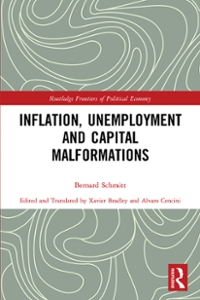You may need to use the appropriate appendix table or technology to answer this question. Suppose In 2018, RAND Corporation researchers found that 77% of all individuals ages 66 to 65 are adequately prepared financially for retirement, Many financial planners have expressed concern that a smaller percentage of those in this age group who did not complete high school are adequately prepared financially for retirement. (a) Develop appropriate hypotheses such that rejection of N, will support the conclusion that the proportion of those who are adequately prepared financially for retirement is smaller for people in the 66-69 age group who did not complete high school than it is for the population of the 66-69 year old. (Enter In for a as needed.} (b) In a random sample of 300 people from the 65-69 age group who did not complete high school, 159 were not prepared financially for retirement. What is the p- value for your hypothesis test? Find the value of the test statistic. (Round your answer to two decimal places.) Find the p-value. (Round your answer to four decimal places.) p-value = (c] At a = 0.01, what is your conclusion? Do not reject He. We conclude that the percentage of 66- to 69-year-old individuals who are adequately prepared financially for retirement is smaller for those who did not complete high school. Reject Ho. We conclude that the percentage of 66- to 69-year-old individuals who are adequately prepared financially for retirement is smaller for those who did not complete high school. Reject Ho. We cannot conclude that the percentage of 66- to 69-year-old individuals who are adequately prepared financially for retirement is smaller for those who did not complete high school. Do not reject H,. We cannot conclude that the percentage of 66- to 69-vear-old individuals who are adequately pranarad financially far vaticanQuestion #2; Two firms are deciding simultaneously whether to enter a market. If neither enters, they make zero profits. If both enter, they make profits -1, since the market is too small for two firms. If only one enters, that firm makes high profits. This game is summarized in the following matrix: Firm 2 H Firm 1 Enter Do not enter Enter -1, -1 10, 0 Do not enter 0. 5 al. What are the pure-strategy Nash Equilibria of this game, if any? by Now assume that firm 1 can enter the market with probability p and firm 2 can enter the market with probability q. Write down the expected payoff of each firm for each course of action (enter, do not enter). cl Find the Nash equilibria in mixed strategies. O e P W acerIn 2008, the policymakers of the economy of Eastlandia projected the debt-GDP ratio and the ratio of the budget deficit to GDP for different scenarios for growth of the deficit over the next 10 years. Real GDP is currently $1,000 Billion per year and is expected to grow by 3% per year; the public debt is $300 billion at the beginning of the year, and the deficit is $30 billion in 2008 Year Real GDP Debt Budget Deficit Debt Budget Deficit Billions of $) Billions of $) % of GDP) (X GDP) 2008 1,000 300 30 200 1,030 30 2010 1,061 30 2011 1,093 DE 2012 1,126 30 2013 1,159 30 2014 1,194 30 2015 1,230 30 2016 1,267 30 2017 1,305 30 2018 1,344 30 ) Complete the table above if the deficit remains constant at $30 for the entire period. Remember that the government's debt will grow by the previous year's deficit. b) Now redo the table given that the deficit now grows by 3% every year during the period. Year Real GDP Deb Budget Deficit Debt Budget Deficit Billions of $) (Billions of $) (% of GDP) %% GDP) 2008 1,000 300 30 1009 1,030 2010 1,061 2011 1,093 2012 1,120 201 1,159 2014 1,194 2015 1,230 2016 1,267 2017 1,30 2018 1,344 c) What happens to the Debt-GDP ratio and the deficit-GDP ratio for the economy over time under the different scenarios? d) Which scenario would be preferable for this country? Why









